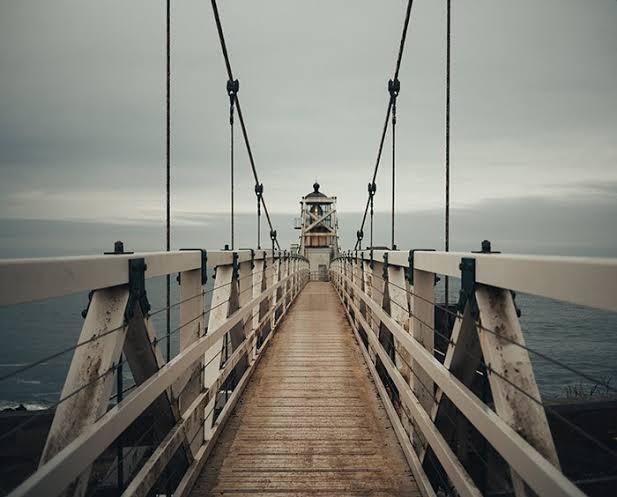The Basics of Photography Composition
Photography is more than just capturing a moment; it’s about telling a story, evoking emotions, and creating art. One of the fundamental elements that can transform an ordinary photograph into an extraordinary one is composition. Understanding and applying the basics of photography composition can make a significant difference in your work. Here’s a comprehensive guide to help you master the art of composition.
What is Photography Composition?
Composition in photography refers to the arrangement of elements within the frame. It’s about guiding the viewer’s eye to the most important parts of the image and creating a pleasing balance. Good composition helps to make your photos more engaging and memorable. Here are some basic photography composition:
The Rule of Thirds

Leading Lines

Leading lines are lines within an image that lead the viewer’s eye to the main subject. These lines can be roads, rivers, fences, or even a line of trees. They help to create depth and draw attention to the focal point.
Tips for using leading lines :
– Find Natural Lines: Look for lines in your environment that can guide the viewer.
– Experiment with Angles: Changing your angle can enhance the effect of leading lines.
Symmetry & Patterns

Humans are naturally drawn to symmetry and patterns. Incorporating these elements into your composition can create visually pleasing and harmonious images. Symmetry often evokes a sense of balance, while patterns add a repetitive and dynamic element to your photos.
How to use symmetry & patterns :
– Central Composition: Symmetry often works best with the subject in the center.
– Break the Pattern: Introducing an element that breaks the pattern can add interest.
Framing

Framing involves using elements within your scene to create a frame around your subject. This technique helps to focus attention on the subject and adds depth to the image. Frames can be natural (trees, arches) or man-made (windows, doorways).
Benefits of Faming :
– Focus and Isolation: It draws attention directly to the subject.
– Depth and Context: Adds layers to the image and provides context.
Depth and Layers

Creating a sense of depth in your photos makes them more immersive. You can achieve this by including elements in the foreground, middle ground, and background. This layering technique helps to lead the viewer’s eye through the image and provides a three-dimensional feel.
Techniques for Adding Depth
– Foreground Interest: Include objects in the foreground to create a sense of scale and dimension.
– Overlapping Elements: Overlap subjects to enhance the perception of depth.
Background & Foreground

Paying attention to the background and foreground can significantly impact your composition. A cluttered or distracting background can take away from the main subject, while a complementary background can enhance it.
Tips for managing background & foreground :
– Simplify the Background: Keep it simple to avoid distraction.
– Use Depth of Field: A shallow depth of field can blur the background, making the subject stand out.
Perspective & Angle

Changing your perspective and angle can drastically alter the composition of your photo. Experiment with shooting from different heights and angles to find the most impactful composition.
Ideas for changing perspective :
– Low Angle: Makes the subject appear larger and more powerful.
– High Angle: Can give a unique, often more dramatic view.
– Tilted Angles: Adds a dynamic and creative touch to your photos.
Negative Space

Negative space refers to the empty space around and between the subject of an image. Using negative space effectively can create a sense of simplicity and focus, emphasizing the main subject without distractions.
How to use negative space :
– Enhance Focus: Use ample space around the subject to make it stand out.
– Create Mood: Negative space can evoke feelings of loneliness, isolation, or tranquility.
Color & Contrast

Colors play a crucial role in composition. Using contrasting colors can make your subject pop, while harmonious colors can create a unified and pleasing look. Understanding color theory can help you choose the right combinations to enhance your composition.
Tips for using color & contrast :
– Complementary Colors: Use colors opposite each other on the color wheel for a striking effect.
– Monochromatic Schemes: Stick to variations of a single color for a cohesive look.
Texture

Incorporating texture into your photos adds depth and interest. Texture can be visual (patterns and details) or tactile (the feeling of the surface). It helps to convey the feel of the subject and adds a layer of complexity to the composition.
Ways to use texture :
– Close-ups: Capture fine details that highlight the texture.
– Lighting: Side lighting can enhance the appearance of texture by creating shadows.
Conclusion
Mastering the basics of photography composition is a journey that can greatly enhance your photographic skills. By understanding and applying principles like the rule of thirds, leading lines, symmetry, framing, depth, background management, perspective, negative space, color and contrast, and texture, you can create more compelling and aesthetically pleasing images. Practice these techniques regularly, and over time, you’ll develop an intuitive sense for great composition, transforming your photography into an art form.
Recent Blogs
[psac_post_carousel show_author=”false” show_tags=”false” show_comments=”false” show_content=”false” slide_scroll=”2″]


